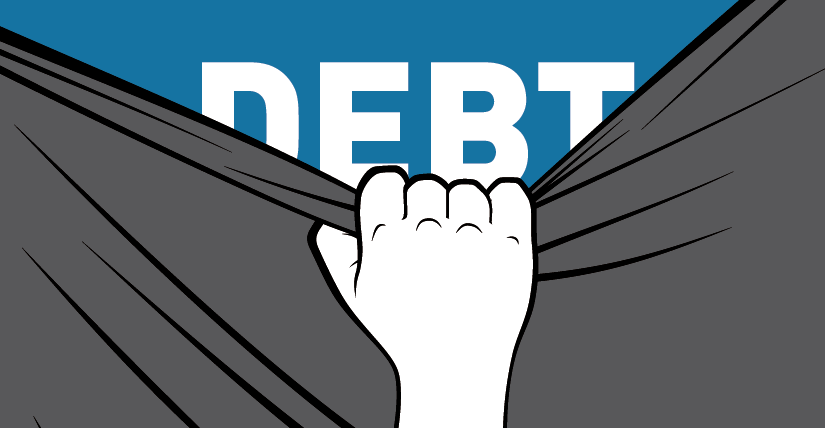INTRODUCTION

The Secret Financial Traps You Didn’t See Coming
Have you ever opened your bank app, scrolled through your transactions, and paused on that $9.99 charge from three months ago? “What’s this for again?” you mutter, half-laughing at your forgetful self. But then it hits you: those little drips have turned into a steady leak, siphoning hundreds from your account without a second thought. Welcome to the shadowy side of personal finance—hidden debts. They’re not the glaring credit card balances or mortgage payments that scream for attention. No, these are the quiet culprits, the unknown debts that sneak up like uninvited guests at a party, overstaying their welcome and racking up the tab.
I’m not here to lecture you on budgeting spreadsheets (though we’ll touch on those). As someone who’s chatted with friends over coffee about their “mystery” charges and helped family untangle surprise bills, I know this feels all too real. Whether you’re a 20-something juggling gig apps and streaming services or a retiree sorting through old medical statements, hidden debts don’t discriminate. They erode your peace of mind, one unnoticed fee at a time. In this post, we’ll peel back the layers on these secret debts, share stories that hit close to home, and arm you with simple steps to reclaim your finances. By the end, you’ll not only spot the traps but also dodge them—like a pro detective in your own money mystery.
Stick around, because uncovering these isn’t just about saving cash; it’s about that sigh of relief when your bank balance finally tells the truth.
What Exactly Are Hidden Debts? The Basics Without the Jargon
Let’s start simple, because finance lingo can feel like decoding ancient hieroglyphs. Hidden debts are any financial obligations you owe that aren’t front-and-center in your monthly budget or credit report radar. They’re not always “secret” in a cloak-and-dagger way—sometimes they’re just overlooked, like that gym membership you signed up for during a New Year’s burst of motivation and forgot about by February.
Think of it this way: Your visible debts are the elephant in the room, trumpeting their presence with due dates and interest alerts. Hidden debts, on the other hand, are the mice nibbling at the edges—small at first, but they multiply fast. According to a 2025 survey by Self Financial, a whopping 83.4% of Americans are carrying some form of debt, and two-thirds of them are downplaying or straight-up hiding it from loved ones. Why? Shame, fear of judgment, or just plain avoidance. But ignoring them? That’s like pretending the check engine light isn’t flashing—eventually, it strands you.
These debts aren’t always malicious; life gets busy. A young professional signs up for a premium podcast app during a commute phase that fizzles out. An older couple lets utility autopay creep up with rate hikes they never question. The result? An average of $41,956 in total debt per person, with hidden portions averaging $6,565 skimmed under the rug. Scary, right? But knowledge is your flashlight in this dim corner of personal finance.http://self.inc
The Sneaky Dangers of Hidden Debts: Why They Bite Harder Than You Think
You might shrug off a $10 forgotten subscription as “no big deal.” Fair enough—until it snowballs. Hidden debts don’t just quietly accumulate; they compound with interest, fees, and stress that ripples into every corner of your life. Picture this: That unchecked medical bill from last year’s flu? It could hit collections, tanking your credit score by 100 points overnight. Or those IRS notices tucked in a drawer? Penalties alone can double your tax debt in months.
The real sting? These unknown debts masquerade as “minor” until they’re not. In 2025, with inflation still pinching wallets, the average American wastes $200 annually on unused subscriptions alone—a classic case of subscription creep. Multiply that by a decade, and you’ve got $2,000 vanished into the ether. But the dangers go deeper:
– Financial Domino Effect: One hidden fee triggers overdrafts, leading to more fees. Suddenly, your emergency fund is a myth.
– Credit Sabotage: Unpaid secret debts like medical bills (affecting 36% of U.S. households, totaling $220 billion) can linger on reports, blocking loans or hikes in rent.
– Emotional Drain: As we’ll dive into later, these debts whisper doubts: “Am I bad with money? Can I trust my partner?”
Relatable? Take Sarah, a 28-year-old marketer I know. She laughed off her “fun fund” credit card until a $1,200 balance from impulse buys surfaced during a home loan application. Or my uncle Tom, 62, who discovered $3,000 in accrued tax debt from overlooked deductions—right when he eyed retirement travel. Hidden debts don’t care about age; they exploit distraction.
Common Types of Hidden Debts: The Usual Suspects in Your Wallet
Now, let’s name the villains. Hidden debts come in flavors you might recognize—or not. I’ve pulled from real 2025 trends to spotlight the big ones. We’ll use a quick list to keep it scannable, because who has time for walls of text?
– Subscription Creep: Those auto-renewals for apps, streaming, and boxes of socks you swore you’d wear. In 2025, 61% of subscribers are rethinking them amid economic squeezes, yet the average household shells out $1,000+ yearly. Hidden? Totally—until your statement looks like a Netflix binge gone wrong.
– Medical Bills: The surprise after a check-up or ER visit. With 100 million Americans owing $220 billion, many go unnoticed until collections call. Recent CFPB rules aimed to boot them from credit reports, but court battles mean they’re still lurking for many.
– Tax Debts: Overlooked filings or missed refunds turned penalties. The IRS doesn’t forget; interest accrues at 0.5% monthly, plus failure-to-pay fees up to 25%. One ignored notice? Wage garnishment without warning.
– Secret Credit Card or Loan Debt: Often tied to [financial infidelity](https://www.nationaldebtrelief.com/blog/debt-guide/marital-debt/impossible-hide-money-spouse/), where 32% admit to hiding spending from partners. Think impulse cards maxed during stress shopping.
– Bank Fees and Overdrafts: Sneaky $35 hits for low balances. In a high-inflation year, these add up to $500+ annually for frequent offenders.
– Utility and Service Bill Accruals: Rate hikes on autopay you never adjust. An older friend of mine found $800 in back-billed water charges—talk about a flush of regret.
To make this crystal clear, here’s a table comparing these hidden debts by average impact. I kept it straightforward: no spreadsheets required, just eye-opening numbers based on 2025 data.
| Type of Hidden Debt | Average Annual Cost | Common Impact on Credit Score | Who It Hits Hardest | Quick Fix Timeframe |
|—————————|———————|——————————-|——————————|———————|
|Subscription Creep | $200–$1,000 | Minimal (unless unpaid) | Young adults (Gen Z/Millennials) | 1 audit session |
| Medical Bills | $500–$2,000 | -100 to -200 points | Families with kids/elderly | 1–3 months negotiation |
| Tax Debts | $1,000+ (w/penalties) | -50 to -150 points (liens) | Self-employed/freelancers | 6–12 months IRS plan |
| Secret Credit Debt | $2,000–$5,000 | -80 to -150 points | Couples in relationships | 3–6 months payoff |
| Bank Fees/Overdrafts | $300–$600 | Indirect (via balances) | Low-income households | Immediate switch |
| Utility Accruals | $200–$800 | Collections risk (-100 pts) | Renters/seniors | 1 billing review |
This table isn’t just data—it’s a wake-up call. See how medical and tax debts punch hardest on credit? Prioritize those if they’re in your mix.
Spotting Signs of hidden Debt: Red Flags in Your Daily Grind
How do you know if unknown debts are playing hide-and-seek with your finances? It’s like that nagging itch you can’t place—subtle at first, then insistent. Here are bullet-point beacons to watch for, drawn from chats with folks who’ve been there:
– Mystery Charges: Scrolling statements reveals $5–$20 hits from “forgotten” services. Pro tip: Set a monthly “weird charge” review.
– Mail Pile-Up: Unopened envelopes from collectors or the IRS? That’s a secret debt siren. My cousin ignored one for months—boom, $2,500 tax lien.
– Partner Evasiveness: If talks about money veer to “later,” it might signal [hidden costs of debt](https://www.moneyfit.org/the-hidden-costs-of-debt/) like financial infidelity. Stats show 36% hide from spouses.
– Credit Dips Without Reason: A score drop? Check for lurking medical or fee-based debts.
– Stress Spikes: Unexplained anxiety around bills? Debt’s shadow often shows up emotionally first.
For the young hustler: If your Robinhood alerts feel more like guilt trips, audit those micro-investments turned loans. For the seasoned saver: Watch fixed incomes for creeping utilities—my aunt caught a $400 surprise that way.
How Hidden Debts Hit Young and Old: Relatable Stories from Real Life
Hidden debts aren’t abstract; they’re the plot twists in our money stories. Let’s humanize this with slices from everyday folks—because seeing yourself in the narrative makes action stick.
Start with Mia, 24, fresh out of college and thriving on TikTok side gigs. Her secret debt? A cascade of app subscriptions—Duolingo Premium, Canva Pro, three meal kits—for “productivity hacks” that gathered digital dust. By mid-2025, they’d crept to $300 monthly, half her fun budget. “I felt like a failure,” she shared over Zoom, “but admitting it freed me.” Relatable for zoomers: That FOMO signup turns foe fast.
Contrast with Harold, 68, a retired teacher in Ohio. His unknown debt snuck in via medical bills from a routine hip replacement. Post-insurance, $1,800 lingered in billing limbo, accruing interest until a collections ding on his credit halted his RV dreams. “I thought Medicare covered it all,” he sighed. For boomers and beyond, it’s the “set it and forget it” trap—autopay hides hikes, but not forever.
Then there’s couples like Alex and Jordan, mid-30s parents. Alex’s hidden credit card for “just gadgets” ballooned to $4,000, sparking trust fractures. As one study notes, 54% see debts as divorce fuel. Their fix? A “money date” ritual—coffee and full disclosure.
These tales echo a truth: Hidden debts amplify life’s stages. Youth battles impulse; age fights oversight. But both? They thrive on silence.
Practical Tasks to Uncover and Crush hidden Debt: Your Action Playbook
Theory’s great, but action’s the hero. Here’s your no-fluff toolkit to practicalize this—step-by-step tasks tailored for busy lives. Do one per week; watch the wins stack.
Task 1: The 15-Minute Subscription Audit
– Log into your bank app.
– Search “recurring” or filter by small amounts under $20.
– List ’em: App? Service? Use it weekly?
– Cancel three unused today—tools like Rocket Money make it painless.
– Pro Tip for Youngins: Set phone reminders for trial ends. Saved Mia $150/month.
Task 2: Medical Bill Deep Dive
– Request itemized statements from providers (free by law).
– Cross-check insurance EOBs (Explanation of Benefits)—spot overcharges.
– Negotiate: Call and say, “This seems off; can we reduce?” 70% succeed.
– For Seniors: Use AARP’s bill review checklist. Harold slashed $600 this way.
Task 3: Tax Debt Recon
– Download IRS transcripts (irs.gov—free, 10 minutes).
– Hunt unclaimed refunds (average $1,000) or penalty waivers.
– If owed, apply for installment agreement—lowers stress.
– Freelancer Hack: Quarterly estimates prevent surprises.
Task 4: Credit Report Cleanse
– Pull free annual reports from AnnualCreditReport.com.
– Dispute errors (medical debts often qualify post-2025 rules).
– Track with apps like Credit Karma for alerts.
Task 5: Partner Transparency Talk
– Schedule a low-stakes chat: “Hey, let’s share statements—no judgment.”
– Use a shared app like Honeydue for joint visibility.
– If infidelity vibes, seek a counselor—rebuilds faster than solo.
Bullet these into your calendar. Each task? 30 minutes max. The payoff? Freedom from hidden debts grip.
The Emotional and Mental Toll of Hidden Debts: Beyond the Balance Sheet
Money’s not just numbers—it’s feelings. Hidden debts whisper lies: “You’re irresponsible.” “You’ll never catch up.” A BBC study links debt to higher depression rates, with 22% feeling constantly worried. For youth, it’s isolation—66% of debtors feel alone, per Self’s 2025 poll.
Older adults? Regret layers on, limiting legacy gifts or travel. Physically, stress spikes cortisol, risking heart issues—debt holders skip check-ups 20% more. Relationships fracture too: Arguments over secret debts erode trust, turning partners into adversaries.
But here’s the human spark: Sharing lightens it. Mia joined a debt-free subreddit; Harold confided in his book club. You’re not broken—you’re burdened. Unload, and watch resilience bloom.
CONCLUSION:
Shine a Light on Your Hidden Debts Today
We’ve journeyed from the “whats” to the “hows” of hidden debts —those unknown debts and secret debts that lurk like financial fog. From Mia’s app avalanche to Harold’s bill blindside, the stories remind us: You’re not alone, and it’s never too late. These debts thrive in shadows, but with audits, talks, and tasks, you reclaim the narrative. Imagine 2026: No mystery charges, no credit surprises, just you, steering your ship.
The value? Not just dollars saved (though $200–$1,000 yearly adds up), but that quiet confidence. Finance isn’t punishment; it’s power. Start small—one task today—and build from there.
What’s one hidden debt that surprised you lately? Or a win from auditing your subs? Drop it in the comments below—let’s swap stories and tips. Your share might just save someone else’s sanity.


